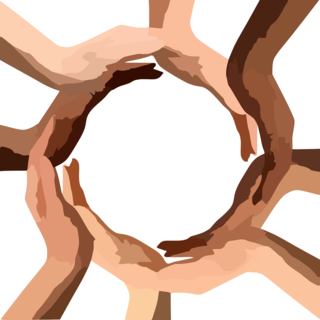Polyamory
Polysaturation: When Polyamorous People Have Enough Partners
Community constructions of language and research on CNM relationships.
Posted February 25, 2021 Reviewed by Devon Frye
Because contemporary English language usage in the United States is built around assumptions of monogamy—or compulsory monogamy, as some scholars have labeled it—it often fails to adequately describe the experiences of people in consensually non-monogamous (CNM) relationships like polyamory. This absence of adequate existing language has encouraged polyamorous folks to create their own words that describe their experiences.
Poly Lingo
In addition to the word polyamory, polyamorous folks have constructed a poly lingo in which they create words or phrases like New Relationship Energy (NRE), the one penis policy (OPP), compersion, metamour, polyagony, unicorns and unicorn hunters, and polysexual and polyfidelitous.
Inspired by this polyamorous propensity to create words to describe important relationships, feelings, and experiences, I created the words polyaffective (emotionally intimate, non-sexual relationships that often form the support structure for a polyamorous family), the polyamorous possibility (what happens when people realize consensual nonmonogamy is an option), and otherfathering (when men who have not had children are able to become father-adjacent and develop caring relationships with their partners' children).
While polyamorous community members and other academics have adopted those three words/phrases, I also created the term monocentrism to describe the larger social focus on monogamy as the only legitimate form of relationship. An awkward term, no one picked it up and the phrase compulsory monogamy took the place in the lexicon, so I use compulsory monogamy now as well.

Polysaturated is a word that people in polyamorous relationships created to describe the phenomena of CNM folks having enough relationships. When people are polysaturated, they have as many relationships as they can handle and they do not have the time or emotional energy for another partner. Like many words floating around CNM communities, the origin of this word is not clear. (If anyone knows the originator of this word, I would really like to hear about it in the comments section!)
Research on Polysaturation
Because polysaturation is related to the number of partners a given person has, it must define what it means to be a partner. In monogamous relationships it is fairly obvious who counts as a partner. When monogamous people are in an exclusive romantic and/or sexual relationship, then they are most likely partners. This is especially true when they live together, have children, and remain in an exclusive relationship for a long duration—even if they are not married, they are recognizable partners.
It is not as obvious what counts as a partnership in consensually monogamous relationships like polyamory. People in polyamorous relationships may not live together, have children, or have sex very often (or at all) and yet still consider each other to be partners because of how they feel about each other and the connections they maintain. Researchers use a variety of definitions and parameters, and for my own studies, I ask the respondents to self-report and self-define everything from sexual orientation to who is a partner and who is a family member.
Kathy Labriola, author of The Polyamory Breakup Book and The Jealousy Workbook, pointed out to me that:
... polyamory is so vastly diverse that it makes it much more difficult to define anything about it, and defining long-term relationship is pretty difficult. I would add that "long-term" does not necessarily mean "significant" or "committed" or "serious" because many poly people have long-term casual sexual partners who are fun, are friends, and continuously sexually involved over a period of time, but they would probably not call those relationships "serious" because they would probably be called "friends with benefits" (if they are straight) or "f*ck buddies" (if they are queer).

Taken as a whole, research on polyamorous relationships indicates that most CNM persons report being their happiest and healthiest with around 3-5 partners. The Loving More Survey of 2012 found that, among those actively engaged in CNM, the average number of sexual partners was just over five during the previous year. Merely having a sexual interaction with someone does not make them an ongoing partner in the CNM world, so it is not clear if that means that the respondents maintained relationships with their five partners or had more fleeting interactions with some or all of them. Other researchers like Fleckenstein and Cox found that most polyamorous people maintain two or at the most three partnerships simultaneously.
Referring to her 30 years of providing counseling for clients in diverse relationships, Kathy Labriola explained that her clinical experience indicates:
The vast majority of people in open relationships do not have more than two long-term partners concurrently. I have seen a very small number of people who seem to be able to have three long-term committed relationships. However, I could count them on one hand, and they are either retired or being supported financially by a partner, so they have lots of time and energy for relationships since they are not working. I have seen many people TRY to have three serious relationships concurrently, and almost invariably one or more will collapse rather quickly (within six months to a year) because they just do not have the time, energy, or emotional availability to keep all three people marginally satisfied.
My own research indicates that Labriola’s observations hold true for many polyamorous people who sustain two long-term relationships and either do not have the time and energy for more relationships, or have only occasional flings with others. A few, however, seem to be polyvoracious (another word I just made up) in that they never reach saturation and are always interested in a new partner, regardless of how many partners they already have. Some of these folks are relationship nomads who travel to see or meet new partners and may or may not have a home-base themselves.
Facebook image: Monkey Business Images/Shutterstock
References
Balzarini, R. N., Campbell, L., Kohut, T., Holmes, B. M., Lehmiller, J. J., Harman, J. J., & Atkins, N. (2017). Perceptions of primary and secondary relationships in polyamory. PLoS One, 12(5), e0177841.
Fleckenstein, J. R., & Cox, D. W. (2015). The association of an open relationship orientation with health and happiness in a sample of older US adults. Sexual and Relationship Therapy, 30(1), 94-116.
Manley, M. H., Diamond, L. M., & van Anders, S. M. (2015). Polyamory, monoamory, and sexual fluidity: A longitudinal study of identity and sexual trajectories. Psychology of Sexual Orientation and Gender Diversity, 2(2), 168.




